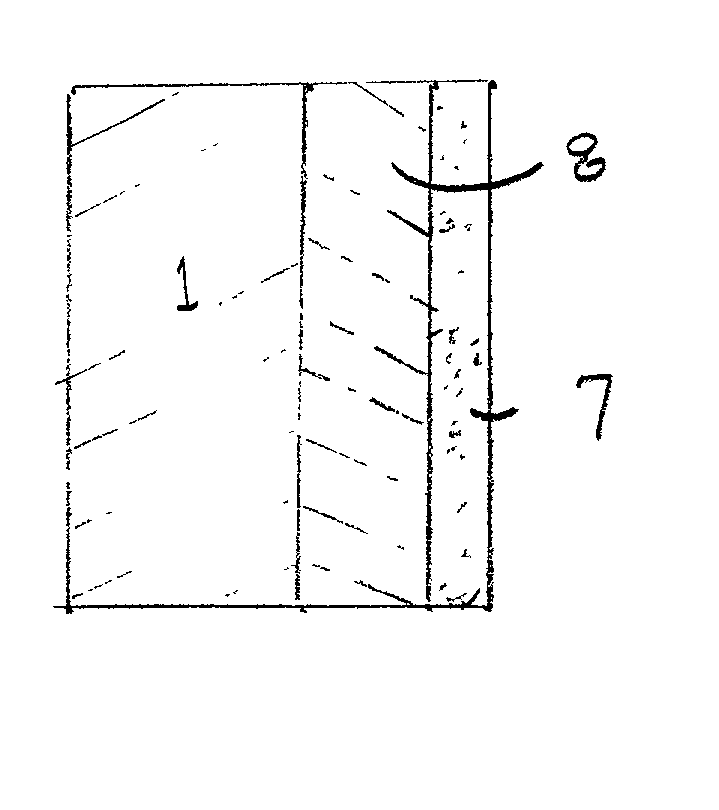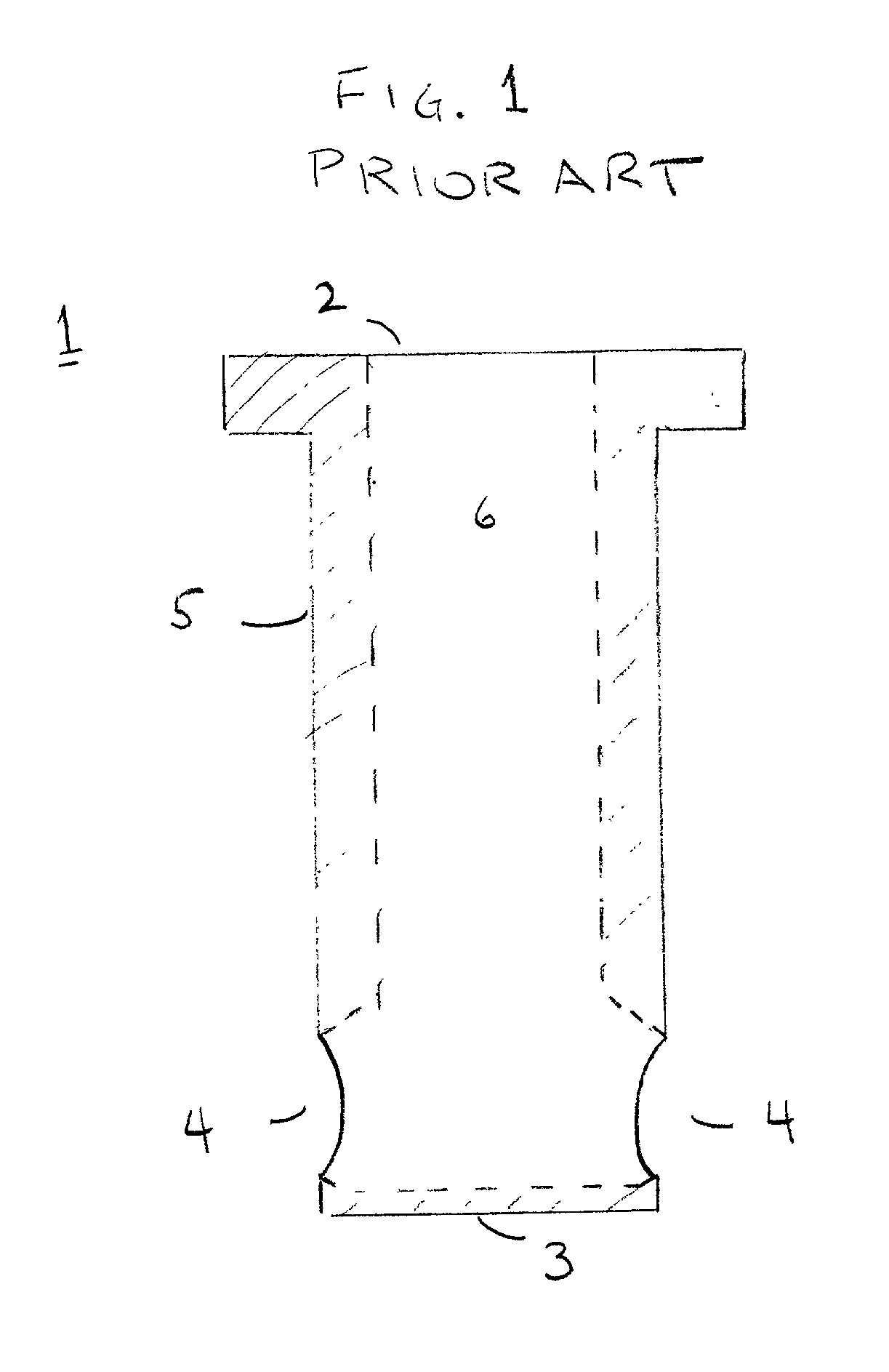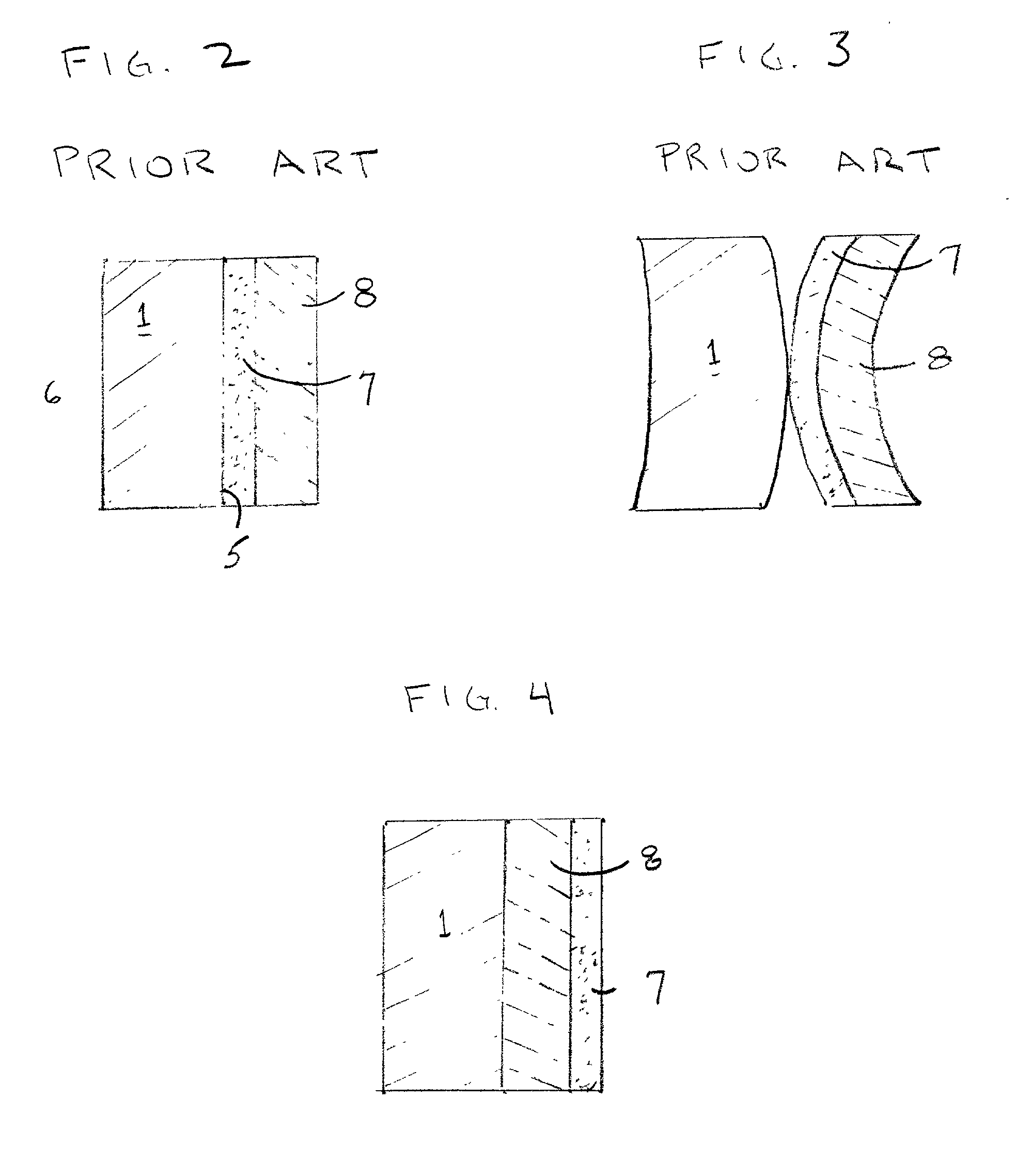Externally glazed article
a technology of external glazing and external glazed parts, applied in the direction of machines/engines, liquid transferring devices, natural mineral layered products, etc., can solve the problems of difficult installation of coatings, high heat transfer coefficient, time-consuming and labor-intensive,
- Summary
- Abstract
- Description
- Claims
- Application Information
AI Technical Summary
Problems solved by technology
Method used
Image
Examples
Embodiment Construction
[0029] Two identical thin slab nozzles comprising carbon-bonded alumina-graphite were selected. Each nozzle had a flat section towards its outlet end. A first nozzle was coated with a standard glaze slip, and the slip was allowed to dry. A suspension was formed comprising a ceramic matrix, insulating microspheres, a binder, and a metal capable of melting under preheat conditions. The first nozzle was dipped in the suspension and dried. A second nozzle was dipped in the suspension and allowed to dry overnight. The second nozzle was then coated with the standard glaze slip and the slip was allowed to dry.
[0030] Both nozzles were heated at 1300.degree. C. for three hours. After cooling, the nozzles were visually inspected for peeling and cracking of the coating and oxidation of the refractory piece. Oxidation was observed by sectioning the nozzles to observe their walls. The first nozzle had significant cracking of its insulating coating on its flat section and spots of the refractory ...
PUM
| Property | Measurement | Unit |
|---|---|---|
| viscosity | aaaaa | aaaaa |
| refractory | aaaaa | aaaaa |
| insulating | aaaaa | aaaaa |
Abstract
Description
Claims
Application Information
 Login to View More
Login to View More - R&D
- Intellectual Property
- Life Sciences
- Materials
- Tech Scout
- Unparalleled Data Quality
- Higher Quality Content
- 60% Fewer Hallucinations
Browse by: Latest US Patents, China's latest patents, Technical Efficacy Thesaurus, Application Domain, Technology Topic, Popular Technical Reports.
© 2025 PatSnap. All rights reserved.Legal|Privacy policy|Modern Slavery Act Transparency Statement|Sitemap|About US| Contact US: help@patsnap.com



